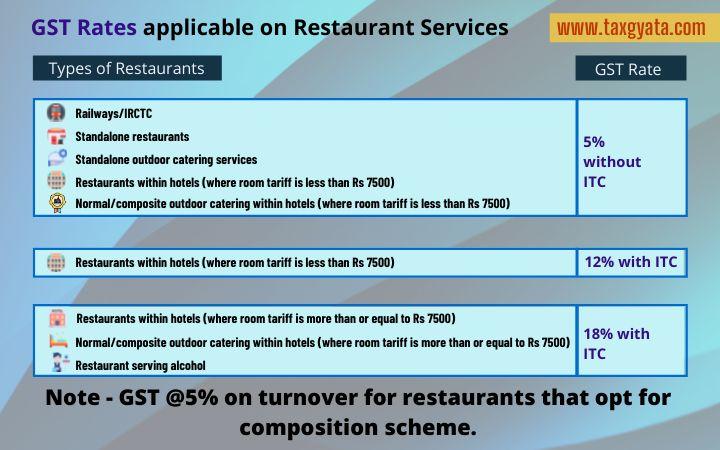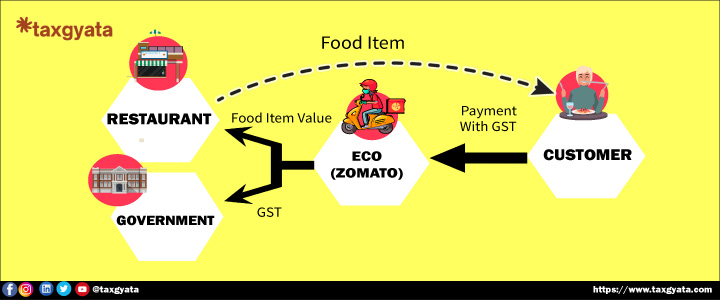GST on restaurant services
CA Rupali Gupta | 08-Nov-2022
GST on restaurant services
There is confusion among the restauranteurs with regard to the applicability, rates and other provisions of GST on the restaurant business. Here we will try to explain compliances, procedures and applicable tax rates for restaurants under Goods and Services Tax.
Latest Updates
From 1st January 2022, food delivery apps like Zomato and Swiggy, for deliveries made by the platforms, will have to collect GST from customers on the behalf of the restaurant and deposit with the government.
GST registration for restaurants
GST registration is a unique GST identification number (GSTIN) issued to the taxpayer after filing an online application on the Common portal. Any person having a GSTIN means he is registered under Goods & Services Tax. Restaurants need registration under the GST regime if their annual turnover exceeds the exemption limit i.e. 20 lakhs.
GST registration is state-specific, so if any restaurant owner having outlets in different states, then he needs to have a separate registration for each state.
Documents required for registration
- PAN card of restaurant owner
- Aadhaar card of restaurant owner
- Bank acount documents
- Business address proof i.e. rent agreement or property tax receipt/electricity bill
- MOA, AOA, and certificate of incorporation in case of a company
- Partnership deed in case of a firm
After getting registered under GST, restaurants are required to:-
- Charge GST at the applicable rate from customers;
- Issue taxable invoices as per GST invoicing rules;
- Collect tax from customers and deposit it to the Government;
- File required GST returns on or before the due date.
Read more about GST registration
GST rates applicable on restaurant services
|
Types of restaurants |
GST rate |
|
Railways/IRCTC |
5% without ITC |
|
Standalone restaurants |
5% without ITC |
|
Standalone outdoor catering services |
5% without ITC |
|
Restaurants within hotels (where room tariff is less than Rs 7500) |
5% without ITC |
|
Normal/composite outdoor catering within hotels (where room tariff is less than Rs 7500) |
5% without ITC |
|
Restaurants within hotels (where room tariff is less than Rs 7500) |
12% with ITC |
|
Restaurants within hotels (where room tariff is more than or equal to Rs 7500) |
18% with ITC |
|
Normal/composite outdoor catering within hotels (where room tariff is more than or equal to Rs 7500) |
18% with ITC |
|
Restaurant serving alcohol |
18% with ITC |

GST composition scheme for restaurants
A composition scheme is an optional scheme of levy of tax available for small taxpayers in the Goods and Services Tax (GST) regime. Under this scheme, GST is levied at a lower rate with fewer compliances subject to certain restrictions.
The restaurant taxpayers are allowed to choose the GST composition scheme if their annual turnover is below Rs 1.5 crores. Restaurants opting composition scheme are required to pay GST at a concessional rate.
GST burden on food delivery apps from 1st January 2022
Online food delivery platforms such as Swiggy and Zomato will collect the tax at the last point of delivery and pay 5% GST on restaurant services. Rather than collecting GST from restaurants, food delivering companies will collect it directly from consumers. However, there won’t be much difference in the end-users bills. The new changes will come into effect from 1st January 2022.

As a result of this, the restaurants will also have to mandatorily register themselves in Goods and Services Tax like e-commerce sellers.